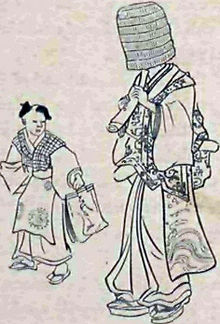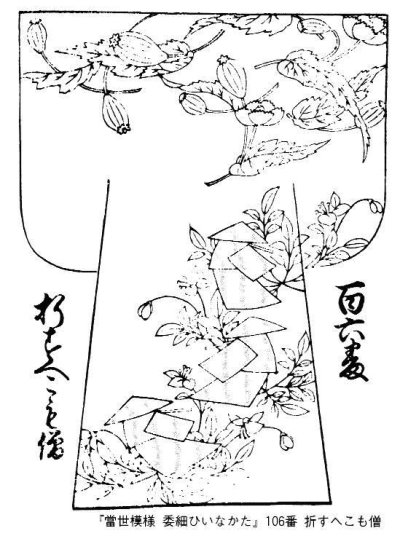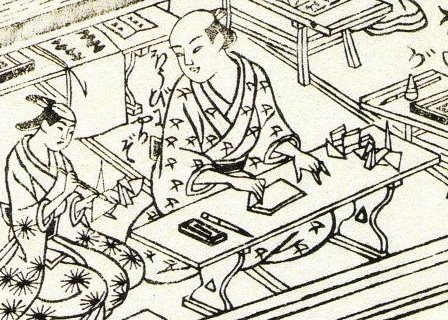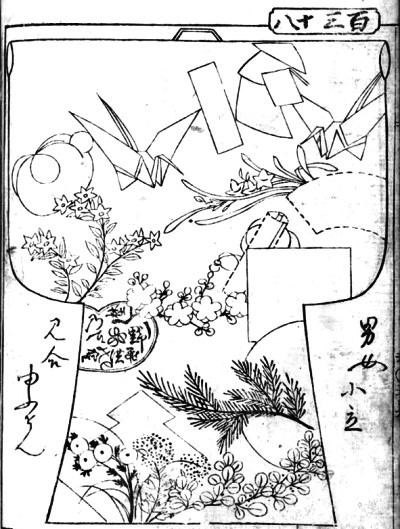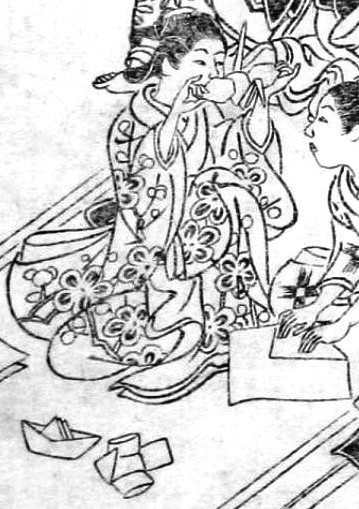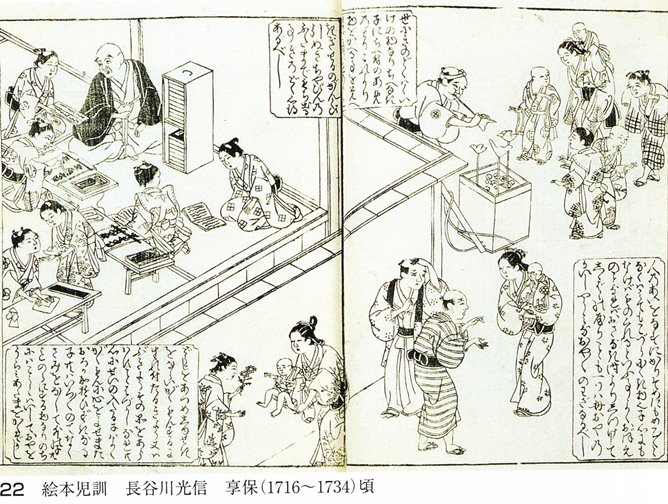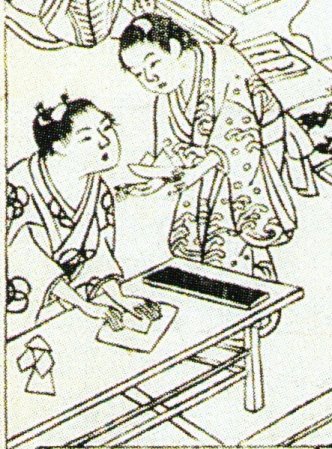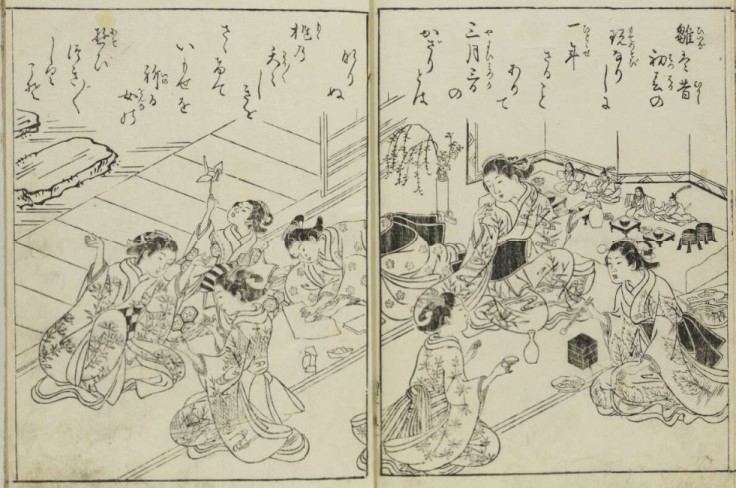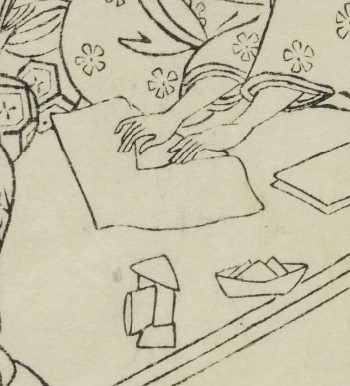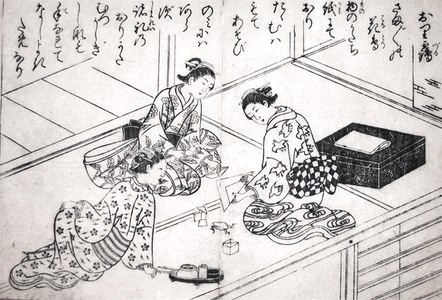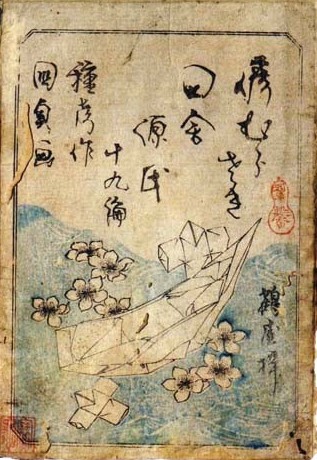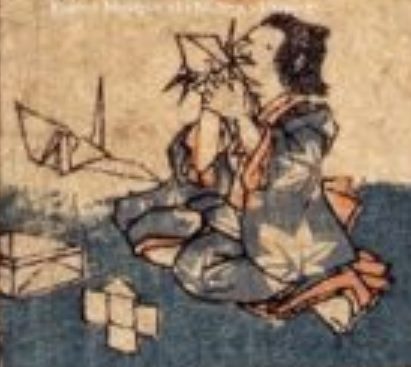| The Public Paperfolding History Project
Last updated 15/11/2025 x |
|||||||
| Komoso | |||||||
| This page is being used to
collect information about the history of the paperfolding
design known as Komoso. Please contact me if you know any
of this information is incorrect or if you have any other
information that should be added. Thank you. While there is some similarity between the ancient Komoso and the more modern Yakko-san, I believe that they are different designs, the latter being derived from the Westertn paperfolding tradition after the introduction of kindergarten-style paperfolding to Japan in 1876. As far as I am aware the original folding method for Komoso is not known. ********** According to Wikipedia the komoso were a group of Japanese mendicant monks of the Fuke school of Zen Buddhism who flourished during the Edo period of 1600-1868. They were characterized by a straw bascinet (a sedge or reed hood named a tengai or tengui) worn on the head, manifesting the absence of specific ego. They were also known for playing solo pieces on the shakuhachi (a type of Japanese bamboo flute). These pieces, called honkyoku ("original pieces"), were played during a meditative practice called suizen (as opposed to reflective silent meditation) and 'that these monks 'were known first as komoso, which means "straw-hat monk". Later they became known as komuso, which means "priest of nothingness" or "monk of emptiness". The 'hood' of the origami komoso design is presumably a representation of the straw hat that characterised these monks.
********** In Japan (and in publications by Japanese authors) 1705 According to 'Origami koten ni miru origami' (Origami in the Classics) by Satoshi Takagi, a print showing Komoso appeared in 'Tousei Moyo Isai Hinakata' which was published in 1705.
********** The design also appears: 1717 In the picture book 'Keisei Ori Tsuru', by an unknown author, which was published in 1717.
********** 1722 According to According to 'Origami koten ni miru origami' (Origami in the Classics) by Satoshi Takagi, a print showing Komoso appeared in a work called 'Nishikawa Hinagata'.
********** 1730 In 'Hinagata Amanohishidate' by Nakajima Tanjiro, which was published in 1730.
********** 1732 In 'Onna fuhzoku tama kagami' by Nishikawa Sukenobu which was published in 1732.
********** 1734 This print from a picture book by Mitsonubo Hasegawa, which can be dated to between 1716 and 1734, shows two children with a Komoso and a Paper Boat with Three Sails in a terakoya (a school for the children of commoners). Source: 'Oru Kokoro', the catalogue of an exhibition on paperfolding history held in Tatsuno City History and Culture Museum in 1999.
********** Komoso also appears in a Japanese book called 'Ranma Zushiki' which dates from 1734. One of these prints shows a group of folded paper objects. Komoso is pictured twice, once folded in half and once flat.
*********** 1748 'Ehon masukagami' by Nishikawa Sukenobu, which was published in 1748, contains a print showing the Hina Doll Festival in which a folded Komoso lies on the floor.
********** 1752 A drawing of Komoso appears in a print by Nishikawa Suketade which is found in his 'Ehon hana no utage' published in 1752.
********** 1836 This print by Kunisada Utagawa, showing Komoso twice, is said to date from 1836.
********** 1845 There is a note in the 'Kan No Mado', usually dated to 1845, which lists 'komuso' among those designs which are already well known and which are therefore not included in the ms (in order to spare the writer's brush). It seems reasonable to identify this with the Komoso design. ********** 1847 Komoso also appears in this print by Utagawa Hiroshige, which can be dated to 1843/7.
********** |
|||||||
